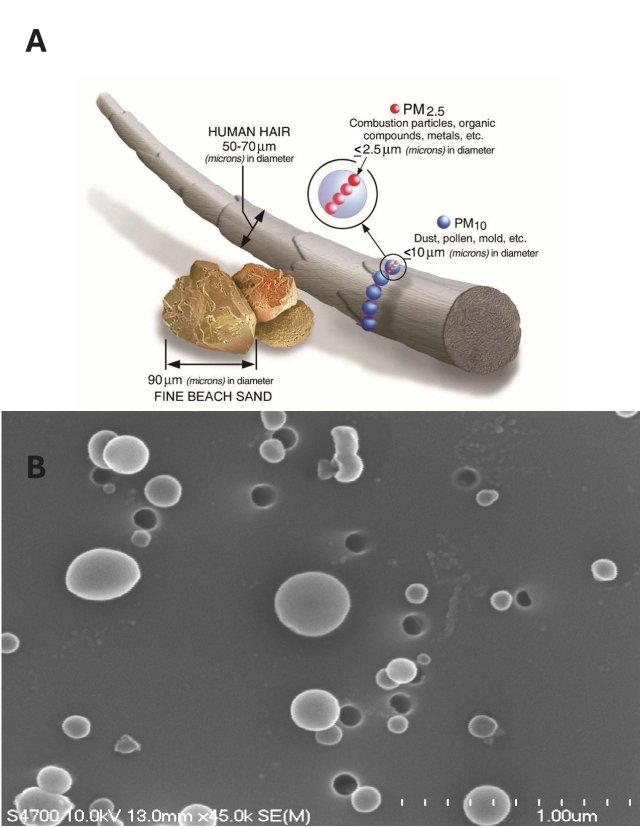Wildfire Smoke - A Complex Mixture

(B) Scanning electron micrograph of wildfire smoke particles (China et al. 2013)
Wildfire smoke is a complex mixture composed of water vapor and numerous pollutants, including, gases (e.g., carbon monoxide, oxides of nitrogen [NOx]), organic compounds (e.g., polycyclic aromatic hydrocarbons [PAHs]), volatile organic compounds [VOCs]) and particulate matter (PM). Of these pollutants, this course focuses on PM because it is one of the main components found in smoke and because there are decades of research documenting that exposure to PM is associated with serious health effects (Prichard et al. 2020; U.S. EPA 2019).
PM is a general term for a mixture of solid particles and liquid droplets found in the air. There are many sources of PM, but the most common are combustion-related activities, including wildfires. Some particles are large enough to be seen with the naked eye, while others are so small they can only be seen using an electron microscope. During a wildfire, concentrations of particles in the air can increase quickly and substantially, causing effects ranging from a light haze to a significant reduction in visibility.
PM is traditionally defined by the size of the particle (i.e., its aerodynamic diameter, Figure 1A). Of the different sizes, very small diameter particles, with an aerodynamic diameter less than or equal to 2.5 microns, are of greatest health concern because they can be inhaled deeply into the lungs. These small particles are also known as fine PM, fine particle pollution or PM2.5. Wildfire smoke consists of particles of varying size and shapes within the PM2.5 size fraction (Figure 1B).
Much of the focus on wildfire smoke is on PM2.5 because of its well-documented health effects. However, gaseous pollutants within smoke, either directly emitted or formed through complex atmospheric reactions, can also affect health. Ozone is not emitted directly during a fire but forms from the atmospheric reactions of NOx and VOCs in the presence of sunlight. Ground-level ozone can increase downwind of a wildfire when meteorological conditions favor the conversion of NOx and VOCs into ozone. Because the specific meteorological conditions necessary to complete the photochemical processing required to form ozone are not always present, there is a high degree of variability in reported ozone concentrations around smoke events (US EPA, 2021).
